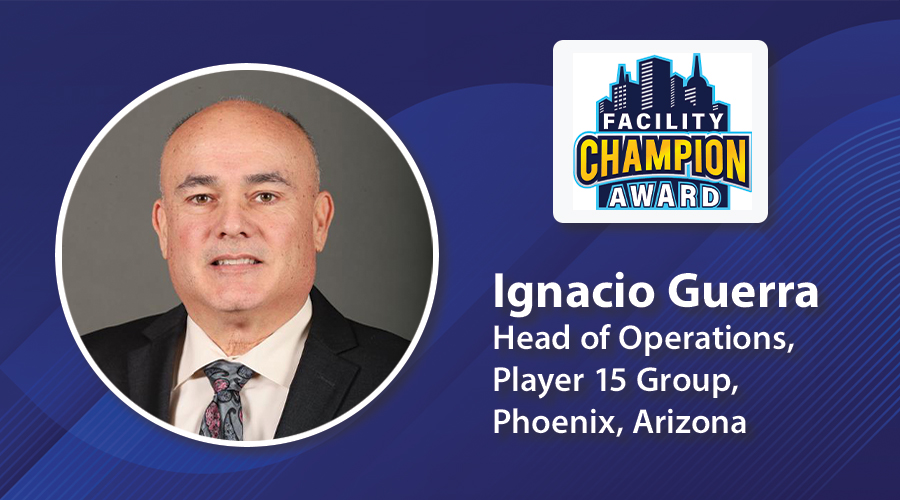'X' Marks New Controls Hot Spot
Industry groups work to realize promise of XML and Web Services to broaden access to building systems data
The software language known as XML has become a hot topic among control system manufacturers. Whether it is a large vendor that touts its proprietary systems, a LonWorks proponent, a manufacturer that specializes in BACnet systems or one of the companies that offer multiple options, major players across the controls spectrum are showing interest in XML as a way of exchanging building systems data with software programs used by different segments of the enterprise.
XML — extensible markup language — is software widely used by the IT community to optimize Internet data exchanges. To its strongest proponents, XML will be a critical component of building automation systems in the near future. Those voices argue that the controls industry needs to move quickly to set standards to make it easier to use XML to share data over the Internet.
Not everyone in the controls industry agrees with the most optimistic estimates of XML’s impact. Some sources say that XML will take longer to have an impact and see no need to rush the standards-setting process. What’s more, some in the controls industry favor working with a standards group from the IT field; others see the need for standards from within the HVAC community.
Despite differences like these, however, there is a widely shared sense that XML will play an increasingly important role in building controls.
“XML provides a foundation for an open exchange of information by placing that information into small containers that have readable labels,” explains Jeremy Roberts, technical director for LonMark International. “It is akin to putting loose parts into separate coffee cans to sort them. We may not know what the parts are or how they are used, but we recognize the coffee cans as bins for those parts.”
XML Potential
For multibuilding developments — whether that means university campuses, government buildings, medical centers or corporations with buildings scattered in various locations — XML may offer a way to manage operations and share important data via Web services over the Internet or campus intranet system.
XML allows one company to provide real-time energy pricing, says Anto Budiardjo, president of Clasma, Inc., co-sponsor of a recent symposium on XML. XML could also be used to help integrate a building automation system with a scheduling system in a university, he says. “Providing information on timetables for use of rooms, people to occupy them and other resources via XML will allow building control systems to be set to control temperature or security at appropriate times.”
Another positive of XML is its origin in the IT industry. Both major Web services — .net and JAVA — employ XML already. That makes it a good mechanism for moving data across the Internet via Web services.
“Web services are instrumental in enabling interoperability and data sharing in a secure and reliable way,” says Chris Kurt, group program manager for the Web services strategy team of Microsoft Corp.
Industry Groups
XML and Web services were the focus of a day-long symposium in late January. Co-produced by the Continental Automated Buildings Association (CABA) and Clasma, the program was an introduction to XML possibilities in integrating building systems, particularly those in the HVAC industry.
The building automation industry has two groups working on standardizing ways to use XML for data exchange. One is the American Society of Heating, Refrigeration and Air-conditioning Engineers (ASHRAE), which developed BACnet. The other group is a CABA committee that is developing a guideline known as oBIX, for Open Building Information Exchange. Formally, the ASHRAE XML group has no liaison with the oBIX initiative, but several members of the ASHRAE committee participated in oBIX discussions and made contributions to its development, according to H. Michael Newman, chairman of the BACnet XML working group.
Through the XML working group, ASHRAE’s BACnet committee is exploring ways to standardize and use XML in representing certain data types that are relevant to BACnet. Among the applications are Electronic Protocol Implementation Conformance Statements (EPICS). “EPICS are machine-readable descriptions of the BACnet capabilities of a specific device or class of devices and may ultimately be used to automate the process of configuring BACnet networks when new equipment is added,” says Newman.
Expressed in XML, object profiles would allow custom or proprietary additions to standard BACnet objects. The group also is working on BACnet/XML Web services, using XML to represent BACnet messages so that Web services gateways can provide building data to enterprise systems across the Internet or an intranet.
Currently, protocol analyzers store information about the number of bits traveling through a wire in proprietary formats. That means they can be used only by the specific analyzer that captures the data. By representing this information in XML, the analyzer data could be shared so that various troubleshooters working on a common problem would have access to it. “This could be of particular use in the case of multivendor control installations,” explains Newman.
Presently, router configurations and network topology communications architecture are managed by proprietary systems. Putting these into an XML format could ease development of new network management tools.
To address these goals, the working group also has set up a Yahoo! discussion group that allows individuals outside the committee to participate. The group is within groups.yahoo.com, as BACnet-XML-WG. “Our meetings have been fruitful; we have several proposals in active deliberation and on a path toward being included in the BACnet standard,” says Newman.
LonMark Goals
“LonMark International realizes that, to facilitate the collection of data-points from various protocols, a common interpretation of those datapoints is needed,” says Roberts. “Our goal is to help define oBIX guidelines in such a way as to enable disparate protocols to be data-mined for similar information — temperature of a room in a building for example — without end-users needing to understand values from different protocols, without putting any of the protocols at an unfair disadvantage and without losing critical information from any protocol.
“As with any type of language standard, XML standards work best when they focus on a well-defined problem and solve it well,” says Roberts. “The oBIX guidelines aren’t a protocol. They are more of a Rosetta Stone for building control data.”
OBIX Origins
The XML/Web Services Committee was established as a CABA working group in April 2003. The group, now known as the oBIX committee, includes professionals from the security, HVAC, building automation, open protocol and IT fields. Today, more than 100 companies are participating in the oBIX initiative. The objective of the group is to have a common, standardized way to manage intelligent buildings, enable enterprise application integration and foster systems integration.
“The committee is developing guidelines for implementing and applying various attributes of XML to building systems,” says Rob Zivney, vice president of marketing, Hirsch Electronics. “They will also provide marketing to let the world know that someone is applying XML to building systems and setting guidelines for use.”
“The goal of the oBIX effort is to provide an enterprise-level solution intended to bridge other protocols such as BACnet and LonTalk and to provide facility operations solutions as well as a bridge to business systems,” says Paul Ehrlich, Trane manager of new product development and chair of the oBIX Committee. “That solution will be based on Internet technologies and designed for interoperability.”
The ASHRAE BACnet committee will define an XML implementation of BACnet. “LonMark has done similar work already,” says Ehrlich.
“We are working hard right now to formalize the alliances between oBix, BACnet and LonMark — clarifying vision and direction and seeing if it will be possible to have a single effort that has broad cooperation across all these groups,” says Ehrlich.
Some proprietary system vendors have already defined XML implementations within their own systems.
Interoperable Roadways
Will oBIX undermine inroads to interoperability already made by BACnet and LonMark? The consensus is that it won’t, because both BACnet and LonWorks have operating data models. “They are unlikely to reinvent the data model wheel, unless they want to spend years going over tilled ground,” Newman says. Roberts agrees. “oBIX is not a replacement for BACnet and LonWorks technologies.”
Ehrlich concurs. “We see oBIX augmenting BACnet and LonTalk and not replacing either.” In the future, he says, a school district might use XML to enable different controllers in different schools to work together. One school might have a BACnet system, another a LonWorks system and a third a proprietary system. At the district level, all three could be connected via one Web-based operator’s station.
This capability would take facility management up a level, says Ehrlich. “CABA’s contribution to oBIX encouraged broad industry support for the initiative,” says Ehrlich. “It is our intention to continue the momentum required for a robust and operationally effective standard.”
XML Possibilities
“The idea behind oBIX is meant to be simple,” Roberts says. “I want the temperature of Room Three on Floor Two of our Detroit office” The reading is transmitted back over the existing IT infrastructure, regardless of the operating protocols on either end.
“The benefit of XML and oBIX to facility executives depends on what applications the software vendors choose to provide,” says Newman. “XML is simply another tool. To the extent that XML makes it easier to acquire and display certain types of data (for example, building energy use or space temperature conditions), it can provide a new window into building system operation that could be useful.”
For example, XML could help room scheduling in hotels by permitting heating and cooling to be controlled by whether a guest has checked in or out. Or it could be used on a medical center’s intranet to set optimum temperature and room conditions for scheduled surgical operations. It is the promise of applications such as those that has created such a stir in the building controls industry. The efforts of industry groups will go a long way to determining how quickly that promise is realized.
Next Step for OBIX
The Continental Automated Building Association (CABA) knows where it wants to go with the oBIX guidelines for XML now being developed. The question now is, what’s the best way to get there?
The goal, say Ronald Zimmer, president of CABA, is to make oBIX an international standard. What remains to be determined is the best route for accomplishing that objective. “At the end of the day, CABA is not a standards-writing body,” he says. “We’re committed as an organization to help drive interoperability. We’re very proud of having launched and nurtured this work, because no one else was doing it. But now we feel it’s time to hand it off to another body.”
Who will the oBIX initiative be turned over to? A transition team has been formed to review CABA’s options and make a recommendation by the end of this month. The recommendation will be voted on in April.
Among the names that have been mentioned are:
Another possibility: a stand-alone group formed by the controls industry to take oBIX to the next level.
Regardless of which group is chosen, CABA remains committed to the initiative. “We’ll still be involved,” says Zimmer. “It’s our baby.”
— Edward Sullivan, editor
|
Related Topics:








